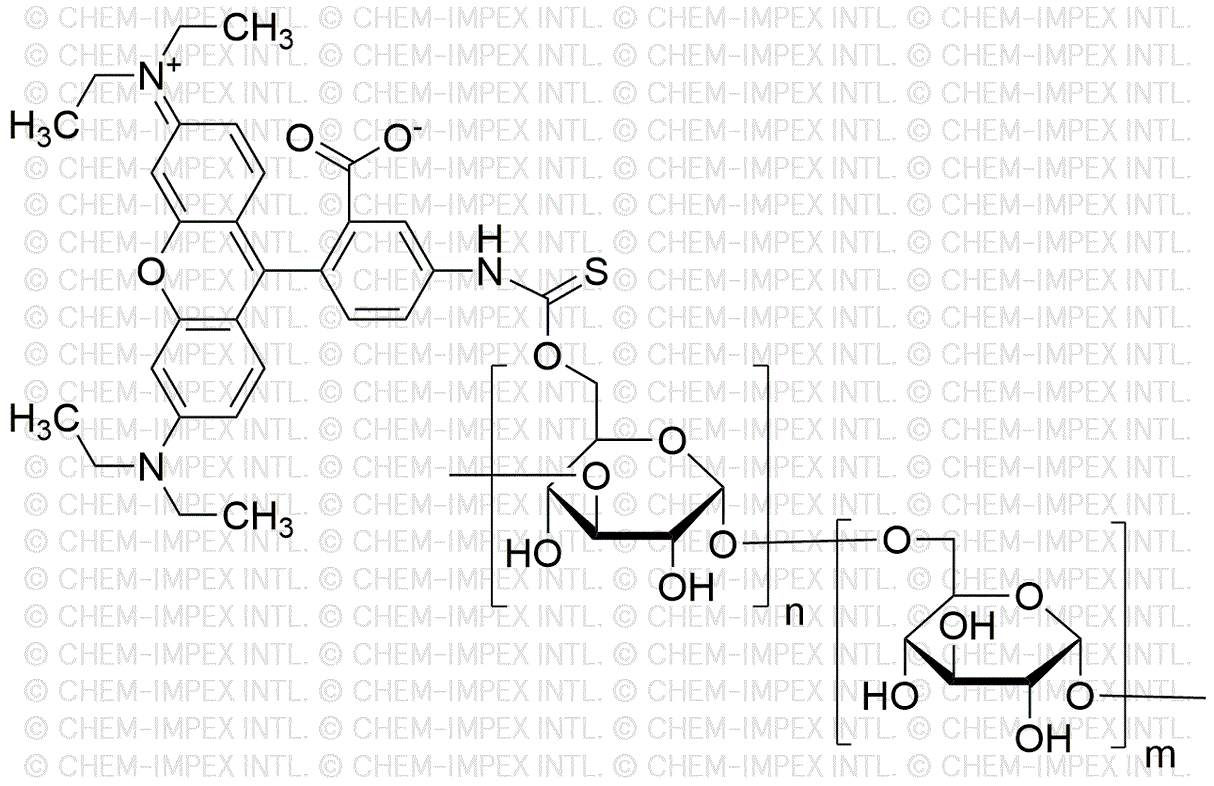Rhodamine B isothiocyanate–Dextran, average mol wt ~0,000 is widely utilized in research focused on:
- Fluorescent Labeling: This compound is commonly used to label proteins and other biomolecules in fluorescence microscopy, allowing researchers to visualize cellular processes in real-time.
- Cell Tracking: In biomedical research, it serves as a tracer for tracking the movement of cells within organisms, providing insights into cell behavior and migration patterns.
- Drug Delivery Systems: The compound can be incorporated into drug delivery systems, enhancing the targeting and efficacy of therapeutic agents in cancer treatment and other diseases.
- Immunohistochemistry: It is utilized in immunohistochemical staining protocols, aiding in the detection of specific antigens in tissue samples, which is crucial for diagnostic purposes.
- Environmental Monitoring: Rhodamine B isothiocyanate–Dextran can be employed in environmental studies to track pollutants in water systems, helping researchers understand contamination spread.
General Information
Properties
Safety and Regulations
Applications
Rhodamine B isothiocyanate–Dextran, average mol wt ~0,000 is widely utilized in research focused on:
- Fluorescent Labeling: This compound is commonly used to label proteins and other biomolecules in fluorescence microscopy, allowing researchers to visualize cellular processes in real-time.
- Cell Tracking: In biomedical research, it serves as a tracer for tracking the movement of cells within organisms, providing insights into cell behavior and migration patterns.
- Drug Delivery Systems: The compound can be incorporated into drug delivery systems, enhancing the targeting and efficacy of therapeutic agents in cancer treatment and other diseases.
- Immunohistochemistry: It is utilized in immunohistochemical staining protocols, aiding in the detection of specific antigens in tissue samples, which is crucial for diagnostic purposes.
- Environmental Monitoring: Rhodamine B isothiocyanate–Dextran can be employed in environmental studies to track pollutants in water systems, helping researchers understand contamination spread.
Documents
Safety Data Sheets (SDS)
The SDS provides comprehensive safety information on handling, storage, and disposal of the product.
Product Specification (PS)
The PS provides a comprehensive breakdown of the product’s properties, including chemical composition, physical state, purity, and storage requirements. It also details acceptable quality ranges and the product's intended applications.
Certificates of Analysis (COA)
Search for Certificates of Analysis (COA) by entering the products Lot Number. Lot and Batch Numbers can be found on a product’s label following the words ‘Lot’ or ‘Batch’.
*Catalog Number
*Lot Number
Certificates Of Origin (COO)
This COO confirms the country where the product was manufactured, and also details the materials and components used in it and whether it is derived from natural, synthetic, or other specific sources. This certificate may be required for customs, trade, and regulatory compliance.
*Catalog Number
*Lot Number
Safety Data Sheets (SDS)
The SDS provides comprehensive safety information on handling, storage, and disposal of the product.
DownloadProduct Specification (PS)
The PS provides a comprehensive breakdown of the product’s properties, including chemical composition, physical state, purity, and storage requirements. It also details acceptable quality ranges and the product's intended applications.
DownloadCertificates of Analysis (COA)
Search for Certificates of Analysis (COA) by entering the products Lot Number. Lot and Batch Numbers can be found on a product’s label following the words ‘Lot’ or ‘Batch’.
*Catalog Number
*Lot Number
Certificates Of Origin (COO)
This COO confirms the country where the product was manufactured, and also details the materials and components used in it and whether it is derived from natural, synthetic, or other specific sources. This certificate may be required for customs, trade, and regulatory compliance.


